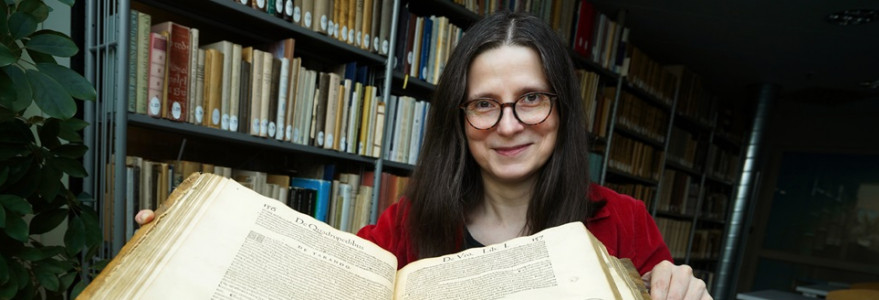“Contemporary idea of Eastern Europe is deeply rooted in the post-war order symbolised by the Iron Curtain. However, a closer look at the early modern concepts of an area known then as ‘European Sarmatia’ will reveal an entirely different facet of this region. In my opinion, the key to its understanding lies in images and descriptions of animals,” said Prof. Grażyna Jurkowlaniec from the UW’s Faculty of Culture and Arts, an ERC Advanced Grant laureate.
Prof. Grażyna Jurkowlaniec is the first Polish female researcher, who received an ERC Advanced Grant. As part of the SAIGA project, she will analyse the relationship between the research on the fauna of Eastern Europe and the ways in which the region was perceived in the early modern period, i.e. between the 16th and 18th centuries. The five-year project, which will begin in October 2024, has received funding of €2.5 million.
Bull, deer or reindeer?
The project will delve into the understanding of this region using representations of animals typical to Eastern Europe, such as an aurochs, a wisent, an elk, and a saiga antelope, whose Latin name saiga serves as the acronym of the project.
“These animals were known to scholars of the 16th-18th centuries mainly through the accounts of ancient and mediaeval authors and up-to-date reports from local informants, who were not always reliable. The images they provided were reproduced in large numbers, which often did not contribute to the evolution of science but, on the contrary, strengthened errors and misunderstandings,” Prof. Jurkowlaniec said.
As an example, the researcher cites an excerpt from Julius Caesar’s Commentaries on the Gallic War. The narrative of the war expedition is interrupted by a description of the Hercynian Forest and its animals, which could not be found anywhere else. “One of these – along with an elk and an aurochs – is ‘a bull in the shape of a deer’. The illustrations and commentaries on this passage are a fascinating testimony to the struggles of early modern scholars to identify a creature in which contemporary researchers usually recognise a reindeer,” the laureate explained.
Unlike before
Prof. Jurkowlaniec expects the research to bring about a reassessment of the early modern concept of Eastern Europe. The innovation of the SAIGA project has three dimensions. Firstly, the researchers will focus on visual and material sources as at least equivalent to written sources. Secondly, they will look for the key to the early modern concept of Eastern Europe in the realm of natural history and not, as before, in intellectual, political, or social history. Thirdly, contrary to the commonly held assumption of a transfer of knowledge mainly from west to east, researchers from the SAIGA project will demonstrate the active role of Eastern Europe in shaping zoological knowledge.
Contemporary humanities
The project integrates several disciplines and research methods: history of science (especially zoology), art history, history of the book, historical geography, philology, and literary studies. To carry it out, it will be necessary to build a team with broad and diverse competences.
“I would like a team composed mainly of individuals at an early stage of their career. I am keen for them to develop their skills beyond the boundaries of a single discipline, while making the most of the opportunities that digital tools offer contemporary humanists,” Prof. Jurkowlaniec underlined.
The results of the research will be developed in the form of monographs and articles, and presented at an exhibition. The data and their visualisations will be collected in the URUS database developed in collaboration with the Digital Competence Centre, University of Warsaw.
Why SAIGA?
Saiga is a Latin name for the saiga antelope and an acronym of the project title: Scholars, Animals, Images, Geographies, and the Arts: De-exoticizing Eastern Europe in the Early Modern Period, encapsulating the five main research areas.



